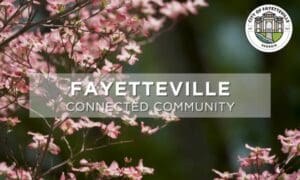The Fayette County Commission has postponed deciding on the fate of the East Fayetteville Bypass, and consequently the third and final phase of the West Fayetteville Bypass.
The topics will be handled in further detail at the commission’s May workshop meeting.
County staff have prepared a cost-trimmed plan that could be funded with local money for the east bypass and thus avoid expensive state and federal mandates for the project. But it would cost $29 million, which would more than exhaust the remaining $25.5 million in transportation sales tax revenues, leaving a shortage of $3.5 million.
That also would effectively mothball the third and final phase of the West Fayetteville Bypass, which is expected to come in between $8-$12 million depending on the final alignment selected. That’s almost half the entire bypass, extending from Ga. Highway 54 southward to Harp Road and Ga. Highway 85.
One problem with sacking phase three of the west bypass is the need to replace a bridge on Ebenezer Church Road, Commissioner Lee Hearn noted. He also agreed that back in 2004, the county’s first priority for the sales tax funds was the east bypass.
But that was before the county realized the east bypass would cost more than $67 million, and so the decision was made soon after to build the west bypass first, since it could be completed totally with funds from the local SPLOST.
Hearn also suggested Thursday night that there are ways the county can save money on the west bypass as well.
Commissioner Allen McCarty suggested that the county could cancel both bypasses and use the remaining sales tax money for fixing bridges and roads.
Commissioner Steve Brown, who like McCarty has opposed the first two phases of the west bypass, said he hasn’t seen any data to support approving the third phase of construction.
So far, the county has spent $12.3 million on the first two phases of the west bypass, according to Public Works Director Phil Mallon.
If the regional transportation sales tax is approved for metro Atlanta in July, the East Fayetteville Bypass will have a funding source outside of the local transportation sales tax that ran from 2004-2009.
If not, and the commission elects not to pursue the pared-down East bypass with local funding, it could be some time before the east bypass comes to fruition because the only state and federal funds for construction are programmed under a “long-term” status. That means the money has not yet been set aside.
The West Fayetteville Bypass is not a project slated for funding from that regional tax, as county officials thought it was too controversial and might diminish the chance of the sales tax gaining voter approval.
The West Fayetteville Bypass is designed to stretch from Ga. Highway 85 South at Harp Road to reach Ga. Highway 54 at the newest traffic light just west of Piedmont Fayette Hospital, then north to end at Ga. Highway 92 near West Bridge Road.
The third phase of the West Fayetteville Bypass will extend it from the current terminus just south of Hwy. 54 all the way to Hwy. 85, using mostly existing roads such as Lester Road and Ebenezer Church Road.
The East Fayetteville Bypass is designed to start at the north on Ga. Highway 85 at Corinth Road, then crossing Ga. Highway 54 east of Fayetteville on a new road path that would ultimately link up with McDonough Road and the existing County Line Road where it would end at the intersection of South Jeff Davis Drive and Inman Road.
If done to the federal standards, the east bypass would cost a projected $48 million. But by using only local money for the project, the cost estimate is pared down to $29 million.
To get the savings in the local-only version of the project, the county eschewed the two-foot paved shoulder on either side of the road in favor of a 10-foot wide grass shoulder, County Public Works Director Mallon has said. The county also would reduce its right of way purchase to 80 feet, instead of the 120 feet needed for the county’s federally funded plan, which would give enough room to four-lane the road if needed in the future.
Another cost savings would be from the elimination of a second bridge by using box culverts for a stream crossing, Mallon said. The county is also eliminating an upgrade of the waterlines along the road, Mallon added.
One advantage of using the pared-down local approach is that the project can move much faster than if constrained by the federal regulations, Mallon noted.
If the county stays with the federally-assisted process, Mallon estimated it would take about two years before the right-of-way acquisition process could begin.











Leave a Comment
You must be logged in to post a comment.